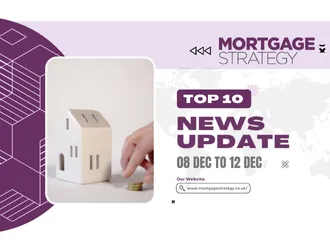
Among the flickers of a return to higher-LTV lending and growing confidence in a strong housing market next year, many self-employed would-be borrowers are still finding it tough to secure a mortgage.
In November, the Office for National Statistics released data showing that, despite a fall in self-employed work numbers in the last quarter, 4.53 million people still work on this basis out of the 32.51 million adults working today.
In addition, a survey of 1,200 people aged 18 to 55 carried out by Studio Graphene discovered that 8 per cent of respondents had started a business of their own recently and 10 per cent planned to, with 40 per cent of this cohort motivated to do so by being placed on furlough or made redundant.
Against this background, Santander and TSB both tightened restrictions on lending to the self-employed, the former requiring more bank statements along with an explanation of how the borrower’s business survived the various lockdowns, and the latter lowering its loan-to-income ratio.
Meanwhile, NatWest tightened its criteria for the self-employed, opting to decline income derived from a business in receipt of a support scheme grant. In October, Nationwide lowered its maximum LTV for the self-employed to 85 per cent.
Private Finance mortgage consultant Chris Sykes explains: “Although pre-Covid the process was relatively straightforward if your income was consistent, and the same rules applied if self-employed or employed… some lenders have [since] taken a blanket approach to the self-employed.
“A blanket approach is never ideal as some will have not been affected at all due to Covid, and it isn’t treating customers fairly if this is the case.”
Knowledge Bank lender relationship manager Matthew Corker says: “It’s not uncommon to have to send in the last six months’ bank statements now, to prove current trading levels, along with signed declarations that Covid hasn’t adversely affected business levels or that business levels have returned to pre-Covid levels.
“More often than not, lenders are also urging brokers to discuss self-employed cases with BDMs prior to submission,” he says.
Paradigm Mortgage Services mortgage technical director Christine Newell says: “I think the way some lenders are currently looking at the self-employed could be described as either them taking sensible precautions or a case of short-sightedness. In general, I think it’s a bit of both.
“Larger, automated lenders have found it difficult to step back into manually assessing a self-employed client whereas specialist smaller lenders and building societies can operate within those parameters with greater ease.
“In other words, it is far easier for the smaller lenders to avoid the one-size-fits-all approach.
“What can be frustrating and very difficult for a self-employed client to understand is that a lender will not use their income for lending purposes but will give a mortgage to an employee of theirs.
“Common sense does need to prevail in individual cases – sometimes this is lost in the larger lender process.”
With a Covid vaccination programme due to start soon as Mortgage Strategy went to press, presumably this will reignite the economy. Are lenders likely to change their approach to the self-employed?
Sykes does not think it will be so clear cut: “I see this being the case for those affected by Covid for the next two to three years, in honesty, because, if there is a dip in figures in the 2020/21 tax year, lenders will still need to understand why, and what has happened since.”
Newell disagrees: “I don’t believe lenders will continue this approach if there is a positive change in the economic backdrop. For example, we have seen the start of more lenders moving into higher LTVs and, within that, allowing more of those cases to go through their automated underwriting processes. Lenders can switch the button on and off fairly quickly.”
However, Corker believes that, although LTV levels “will come back in line with employed applicants… stronger evidencing of income and higher levels of scrutiny for the self-employed look as though they are here to stay”.
For now, everybody Mortgage Strategy spoke to agreed that, for brokers and their clients, highly detailed communication was needed in this difficult situation.
Sykes says: “The conversations I am having are mostly about how the business has performed in the past year, as if we are working on figures from a 2019/20 tax calculation or accounts. These do not reflect the current situation.
“We query what government support they have taken, if any, look through their business bank statements often to evidence income is back to reasonable levels (as lenders do), and just make sure we know their business so we can justify it to lenders, if indeed possible.”
Newell reiterates the link between broker and lender: “Providing a strong business rationale to a lender can build an underwriter’s confidence in a case.
“Likewise, advisers need to understand, when faced with a client where it looks likely that they may struggle to secure a mortgage, they should advise them accordingly, which might mean putting their borrowing plans on hold for the time being.”



